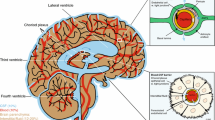Abstract
The role of glutathione (GSH) in the neurotoxicity produced following a single oral dose of 750 mg/kg L-2-chloropropionic acid (L-CPA) has been investigated in rats. L-CPA-induced neurotoxicity was characterised by up to 80–90% loss in cerebellar granule cells and cerebellar oedema leading to locomotor dysfunction. Neurochemically, L-CPA-induced neurotoxicity produced a reduction in the concentration of aspartate and glutamate in the cerebellum and a reduction in the density of NMDA receptors in the cerebellar cortex, whilst there was an increase in cerebellar glycine, glutamine and GABA concentrations. Treatment of rats with buthionine sulfoximine (BSO) at 1 g/kg, i.p., an inhibitor of GSH synthesis, potentiated the toxicity of L-CPA, such that many of the neurochemical markers were significantly different from controls at earlier time points, compared to animals which had received L-CPA alone, and toxicity was also seen in the kidney of BSO plus L-CPA treated rats. In contrast, supplementing GSH concentrations by administration of the isopropyl ester of glutathione (ip-GSH) at 1 g/kg, s.c., was able to protect rats against L-CPA neurotoxicity and prevent many of the neurochemical changes. In order to assess whether the depletion of GSH in the rat cerebellum following L-CPA treatment was related to the delivery of cysteine or cystine, the accumulation of [14C] cystine into cerebellar slices was characterised and found to be energy dependent, Na+ independent and obey saturation kinetics with an apparent Km of 77 μM and an apparent Vmax of 450 nmol/g wet weight per h. The accumulation of cystine into cerebellar slices was non-competitively inhibited by the cysteine conjugate of L-CPA with an apparent Ki of approximately 60 μM, whilst glutamate only inhibited cystine accumulation at doses which were cytotoxic to cerebellar slices. Hence the depletion of GSH in the rat cerebellum, following L-CPA administration, may be due to a reduction in the delivery to the brain of cysteine or cystine, one of the components required for GSH synthesis, by the cysteine conjugate of L-CPA. Our studies show the pivotal role GSH plays in cerebellar granule cell necrosis induced by L-CPA in the rat, indicating that a marked and sustained reduction in cerebellar GSH content by L-CPA may leave granule cells vulnerable to cytotoxic free radical damage leading to cell death, possibly mediated through excitatory amino acids.
Similar content being viewed by others
Author information
Authors and Affiliations
Additional information
Received: 24 October 1995/Accepted: 24 January 1996
Rights and permissions
About this article
Cite this article
Wyatt, I., Gyte, A., Simpson, M. et al. The role of glutathione in L-2-chloropropionic acid induced cerebellar granule cell necrosis in the rat. Arch Toxicol 70, 724–735 (1996). https://doi.org/10.1007/s002040050333
Issue Date:
DOI: https://doi.org/10.1007/s002040050333




